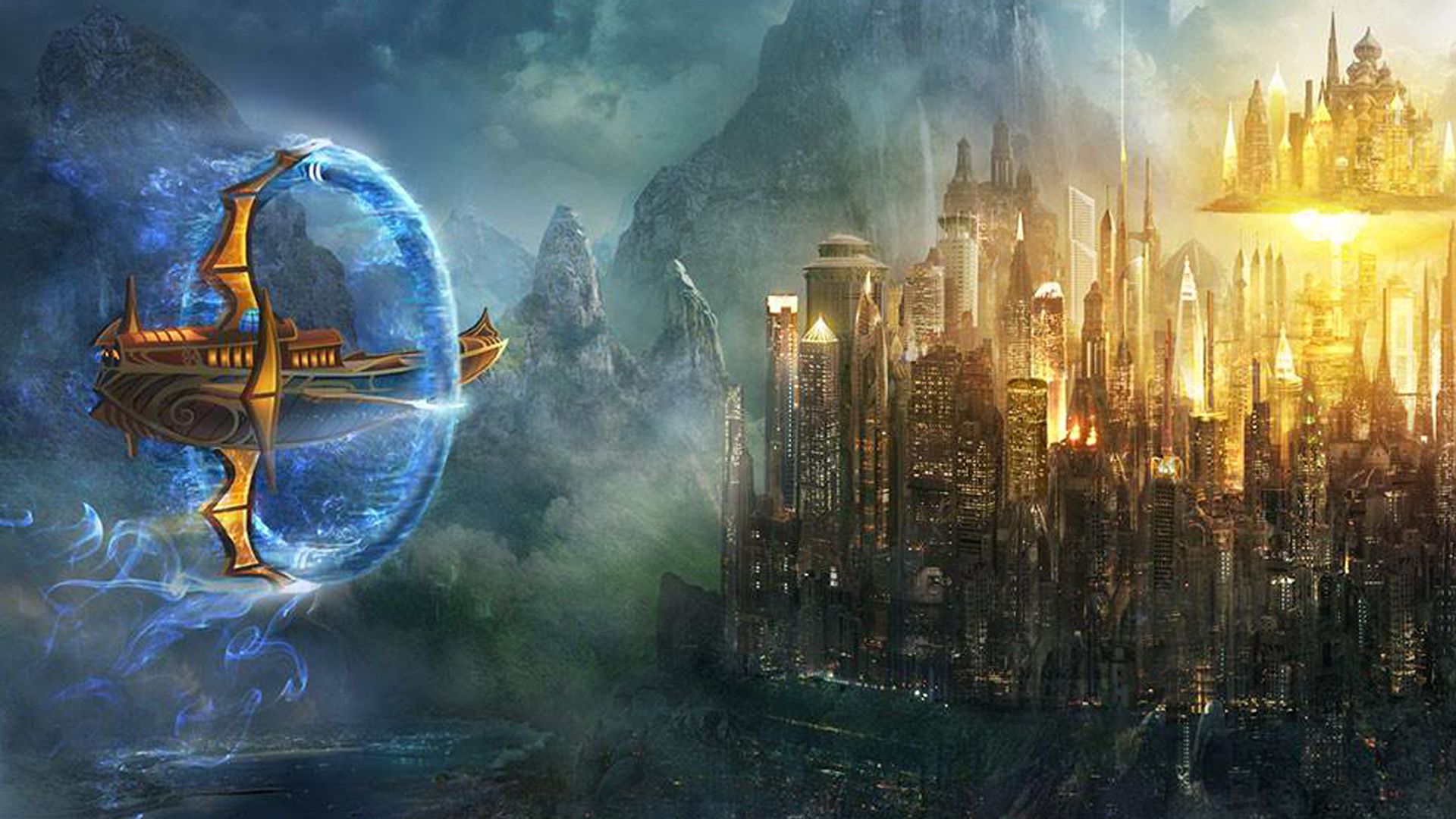The continent of Khorvaire
According to the Book:
The main continent of Eberron, at least from the point of view of the humans and their closest kin, is Khorvaire. In ages past, the goblinoids ruled the continent. By the time the first human settlers arrived 3,000 years ago, the goblinoid nations were already in ruin. Their time had passed, and the stage was set for humans and the other newer races to carve out their own age.
On Khorvaire, humans settled what became known as the Five Nations. Dragonmarks began to appear, and the dragonmarked families developed into the mercantile houses as time went on. Humans interacted with the races they encountered—trading and forming partnerships with dwarves, gnomes, and halflings, conflicting with and driving off goblinoids and other monster races. In time, humans and their allied races (including elves, who migrated from Aerenal to forge a new way of life on Khorvaire) controlled the central region of the continent. They settled large portions of what is now the Eldeen Reaches, Aundair, Breland, Thrane, Zilargo, the Mournland, Karrnath, the Talenta Plains, the Mror Holds, and the Lhazaar Principalities.
Eventually, the great and wondrous kingdom of Galifar arose from the joining of the Five Nations—the original human settlements. During the reign of the Galifar kings and queens, human lands expanded, the dragonmarked houses stabilized, and wonders such as Sharn, the City of Towers, and the Korranberg Library were established. The shining kingdom was legendary, even in its own time, and for good cause.
Many of the most amazing accomplishments of Khorvairian civilization came to pass during Galifar’s almost nine hundred years of existence. The mastery of magic and the arcane arts, which developed through the efforts of the Twelve, King Galifar I’s Arcane Congress, and similar enterprises that followed, led to the construction of great cities, wondrous monuments, magical conveniences, and powerful weapons of war. Massive civil works projects, bolstered by magic, paved the way for the metropolitan centers of central Khorvaire. Magic helped crops grow and herds prosper, so hunger rarely struck the inhabitants of the kingdom.
In its day, Galifar stretched from the Barren Sea to the Lhazaar Sea, covering every mile of the continent. In practical terms, the crown claimed the entire continent but was only able to govern the central region with any profinciency. The farther one traveled toward the edges of the continent, the more wild, undeveloped, and uncivilized the land became. This fact was especially true in the areas that would eventually become the Shadow Marches, Droaam, Darguun, Q’barra, and Valenar. These frontier regions attracted some humans, but were more likely to behome to the monstrous races. The humans that did make the trip to these areas fell into a few categories: explorers,profiteers, missionaries, and settlers.
Profit made an excellent incentive for sending peopleinto the wilderness. There were resources to discover andgather, trade routes to open, maps to create, and money to be made. Some explorers set out for crown and glory, others just to see what was out there. More often, however, explorers were attached to profiteering projects designed to open up some part of the wilderness for use by the civilized regions. This led to the construction of trading posts and supply outposts from which additional expeditions could be launched.
Trading posts developed into settlements in some locations, and there were always those who sought to find new and better lives in new lands. Settlers had hard lives, and many fell victim to monster raids and other hazards, but a few settlements survived. The human–orc communities of the Shadow Marches, for example, are in this category.
Missionaries occasionally delved deep into the wilderness to bring the message of their faith to the natives. Some, such as the Sovereign Host, went to teach. Others went to destroy, as with the lycanthrope extermination launched by the Silver Flame.
In 894 YK, King Jarot, the last king of Galifar, died. With his death, the kingdom of Galifar collapsed. Civil war erupted as his scions refused to uphold tradition and instead battled for the crown. This conflict, which became known as the Last War thanks to headlines plastered across many years’ worth of Korranberg Chronicles, lasted just more than a century. When it ended, the makeup of the continent was changed. Cyre, one of the original Five Nations, was reduced to a blighted, decimated region called the Mournland. The peace conference that resulted in the Thronehold Accords and ended the war created twelve distinct nations from what was once mighty Galifar. The recognized nations, who each signed the treaty and are now in place on Khorvaire, are Aundair, Breland, Darguun, the Eldeen Reaches, Karrnath, the Lhazaar Principalities, the Mror Holds, Q’barra, the Talenta Plains, Thrane, Valenar, and Zilargo. Regions formed during the war but not yet recognized as sovereign include Droaam, the Shadow Marches, the Demon Wastes, and the Mournland.
Though the original Five Nations have been reduced to four, the common usage remains: “By the Five Nations” continues to be the pledge (or curse) of choice.

Comments